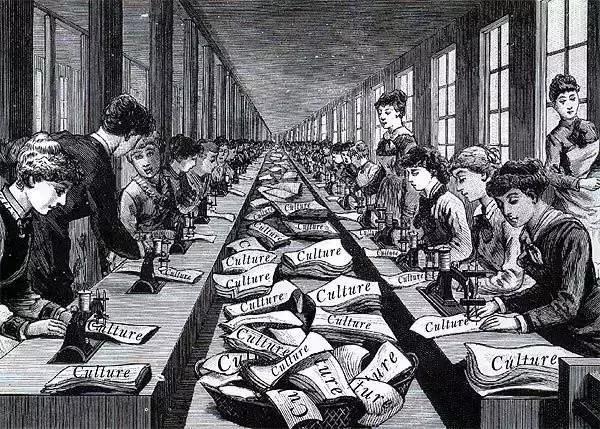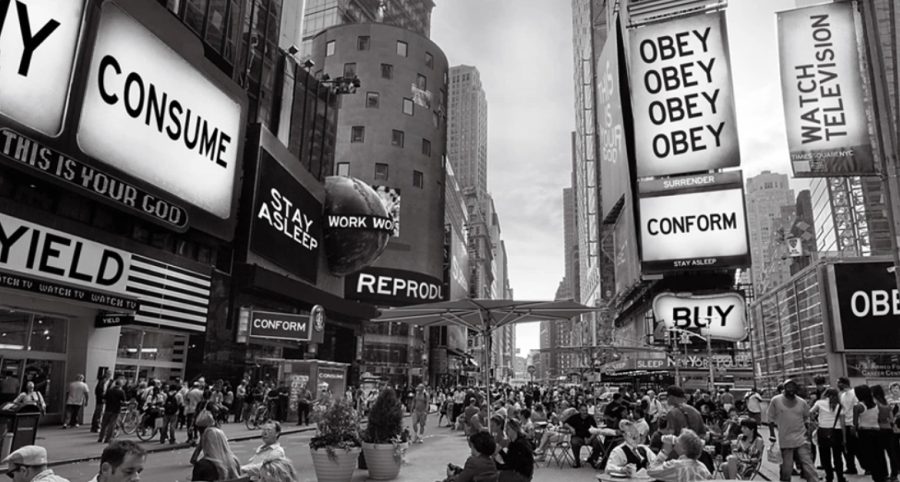Introduce
The term “Culture Industry” was indeed introduced in the book Dialectic of Enlightenment, authored by Max Horkheimer and Theodor Adorno. It was coined to illustrate how information exchange in modern society has become increasingly sophisticated, with culture being treated as an industrial mode of production aimed at generating profit. Examples of products emerging from this cultural industrialization include advertising, newspapers, magazines, and even movies.

┬Ā
Analysis
That it is a matter of something like a culture that arises spontaneouly from the masses themselves, the contemporary form of popular art. —Theodor Adorno.

In my view, the development of the culture industry has both advantages and disadvantages.
On the positive side, it has fostered the growth of media, making television, music, and advertising widely known to the public. People can not only better receive information through these media but also conveniently transmit it. However, in this vast era of the internet, the culture industry significantly influences the intensity of media consumption.
Yet, in this convenient age, the culture industry also diminishes individuals’ capacity for critical self-reflection and discernment. People may gradually lean towards trusting and relying on mass media, potentially leading us to overlook deeper societal evaluations while enjoying entertainment.
┬Ā
Example
TikTok is a prime example of the culture industry, epitomizing trends in media industrialization, entertainment, and commercialization. Developed by a Chinese company, it swiftly garners a vast audience with its quick video browsing format. The platform monetizes through advertising, enhancing product visibility and profitability, characterizing contemporary media. TikTok’s diverse audience spans all age groups, offering content tailored to personal preferences, be it educational, entertaining, or informative, and continuously attracting more users. Globally popular, TikTok amalgamates large-scale culture production and consumption, fostering abundant commercial opportunities.
┬Ā
Summarization
In summary, the culture industry refers to the mass production of culture in an industrialized form over time, catering to popular tastes and generating profit. Products influenced by the culture industry include movies, advertising, music, and more. While the culture industry allows the public better access to information and the selection of content that suits their preferences, it can also potentially undermine individuals’ capacity for critical self-reflection. For example, in the case of the highly popular TikTok today, people can easily be swayed by the prevailing trends, sometimes without a profound awareness of its societal impact and critical analysis. Therefore, the culture industry has its pros and cons, and it’s essential for us to use media rationally and apply our own interpretation.
┬Ā
Reference
- Adorno, T.W. (1975). Culture Industry Reconsidered.┬ĀNew German Critique, 6(6), pp.12ŌĆō19.
- IMDb. (n.d.).┬ĀTheodor W. Adorno | Actor, Writer. [online]
- Madl, C. (2018).┬ĀCultural Industry: Benjamin, Adorno, Horkheimer, Marcuse and Critical Theory of Media. 2. [online] CEFRES.
- van tine, S. (2020).┬ĀAdorno and the Culture Industry. [online] Shalon van Tine.


Hi Dongze,
i enjoyed reading your blog on the culture industry. It was a very wise insight thinking about the positive and negative that the culture industry has brought us with more connection around the world to news, popular culture and entertainment but also with the spread of disinformation and a reduced capacity for autonomous though as you mentioned. To add to that I would ask if you had a specific example of an influencer, or business, or feature using TikTok that either positively or negatively demonstrates the positives and the negatives of the culture industry? It makes me think about how TikTok’s short video platform has notoriously reduced its users capability to watch long-form content and how that affects the way that people use that digital platform versus some others. Overall, I found this post to be a very interesting breakdown of what the culture industry is and its positive and negative sides, looking forward to a closer look on why TikTok specifically came to your mind as an example.
Hi! Interesting blog post, do you personally think tiktok has a more negative or positive impact on society?
Thank you very much for your appreciation of the article. In my view, TikTok still has a positive impact on the majority of the population. Through online social media, we observe more aspirational worlds. In this era of information sharing, the emergence of social media platforms like TikTok undoubtedly enhances people’s awareness of themselves and society.